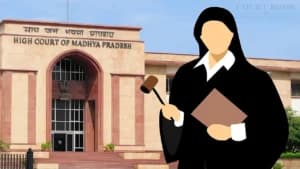Justice Nagarathna of the Supreme Court recently expressed concerns that population-based delimitation could potentially reduce the representation of southern states in the Indian Parliament due to their declining population growth.
During a hearing on May 9, a bench comprising Justice BV Nagarathna and Justice Satish Chandra Sharma was addressing a series of petitions related to the Surrogacy (Regulation) Act. The petitions were filed by couples seeking a second child through surrogacy.
Justice Nagarathna highlighted the demographic contrast between the northern and southern regions of India, stating:
"In South you see, the families are shrinking. Births are coming down in South India... There are so many people in the North who are going on and on having children... There is an apprehension now if they have Delimitation based on population, the number of representatives of the South will be reduced because of the population of North India."
The discussion also touched upon why the petitioners were opting for surrogacy despite already having healthy biological children. Advocate Mohini Priya, representing the petitioners, explained that the couples met the criteria under Rule 14 of the Surrogacy (Regulation) Rules, 2022, which permits gestational surrogacy in cases of medical conditions, multiple pregnancy losses, or failure of in-vitro fertilization (IVF). She mentioned that the couples had tried IVF, but it was unsuccessful.
Read also: Supreme Court: PMLA Accused Has Right to Be Heard Before Court Takes Cognizance Under BNSS
However, Justice Nagarathna questioned the need for a second child through surrogacy when the couples already had healthy children. She emphasized that surrogacy should not become a trend, adding:
"You see, film land celebrities already have two children. That person has two surrogacies and a third child. It should not become a fashion...Everybody wants to be one now. Nobody wants another."
The Court also inquired if one of the couples had an abortion after sex determination of the child, to which Priya clarified that the abortion was due to a life-threatening condition, not because of sex determination.
"Mylords, there was no abortion in this case. She had to terminate the child because there was a life-threatening disorder that she suffered from," Priya explained.
Read also: Supreme Court Demotes Andhra Deputy Collector for Defying HC, Fines Him ₹1 Lakh for Slum Demolition
Justice Nagarathna then referred to China's declining birth rates and the government’s efforts to promote a two-child policy. However, she dismissed the possibility of a similar situation in India, attributing it to the continued population growth in northern states.
"That won't happen in India. There are so many people in the North going on and on having children... If they have Delimitation based on population, the number of representatives of South will be reduced because of the population of North India," she remarked.
The Supreme Court did not issue a notice but tagged the petitions with another case (Writ Petition 238/2024), which also challenges Rule 4(iii)(c)(II) of the Surrogacy (Regulation) Rules, which restricts a second child through surrogacy if the first child is healthy.
Case Details: W.P.(C) No. 446/2025 and W.P.(C) No. 442/2025










